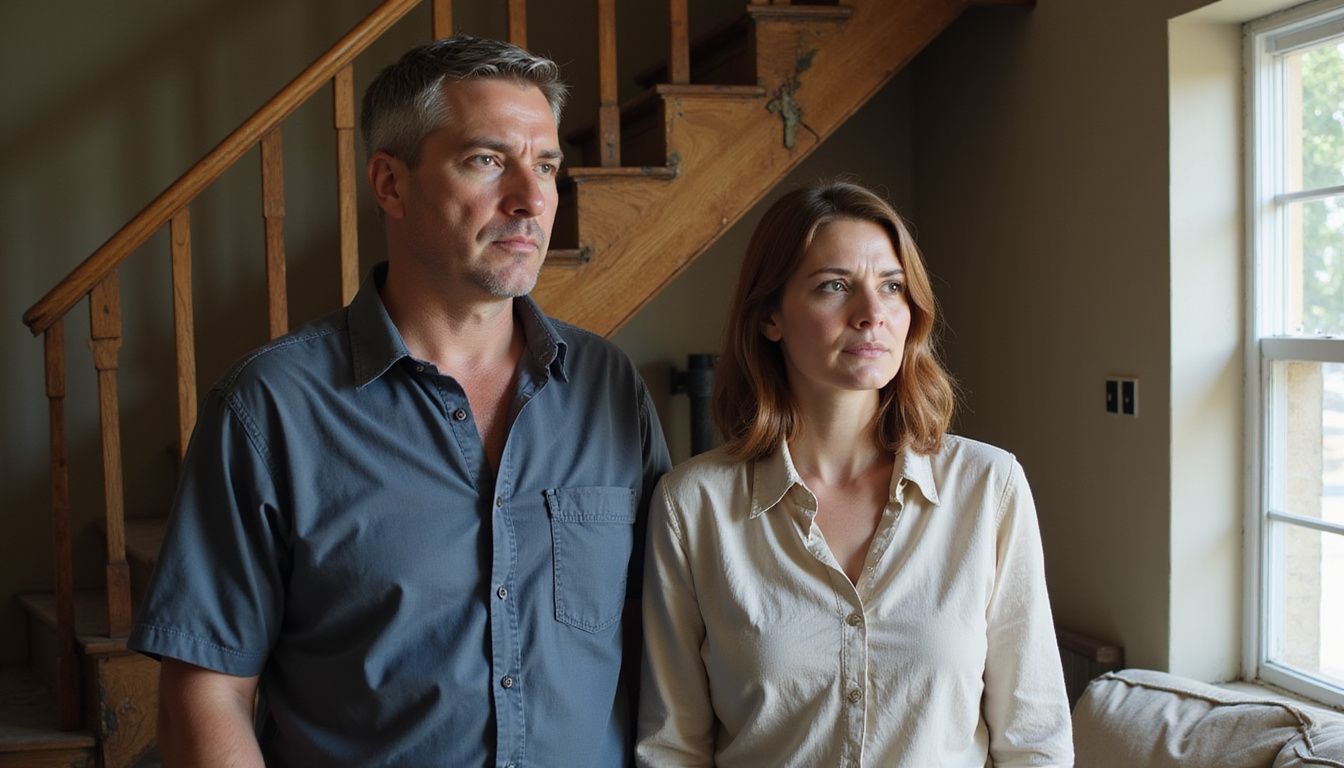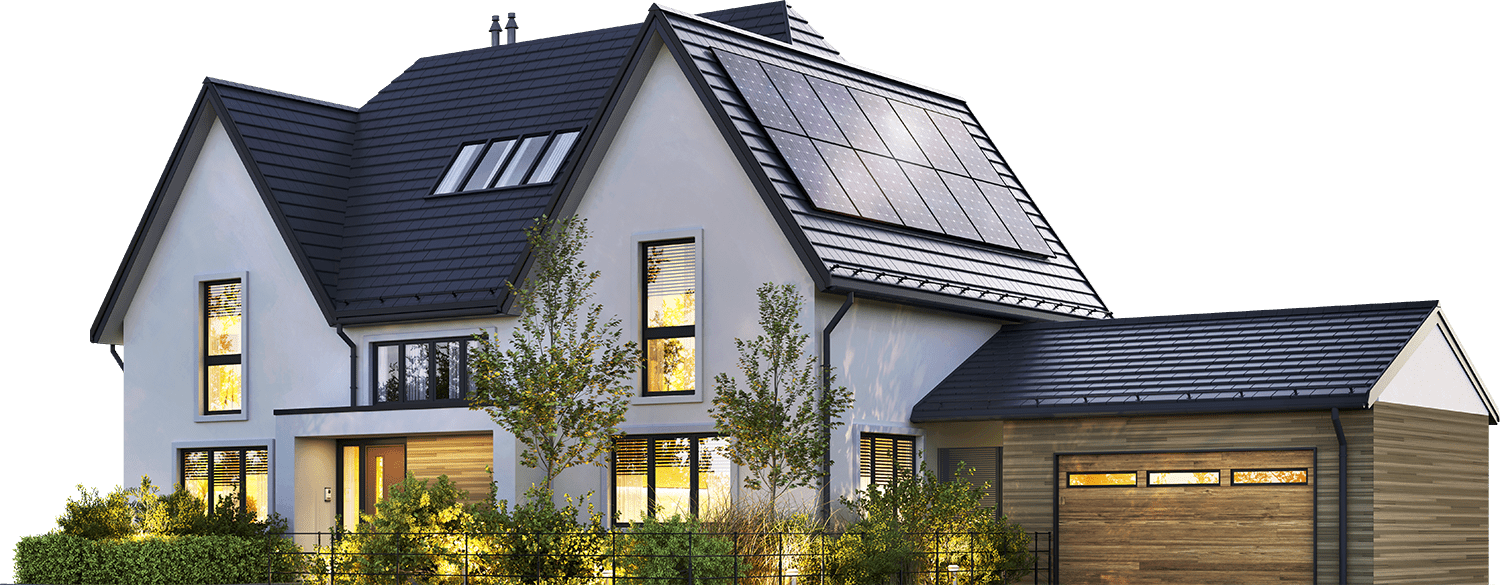Selling your house can get stuck if you miss safety code rules. Unsafe wiring and old smoke alarms are a big problem in many homes. This guide on essential home safety code violations will show you what to check, so your sale goes fast and smoothly.
Stay with us to learn the simple checks that keep your home safe!
Key Takeaways
- Missing or old smoke detectors are a top safety problem. The NFPA states that working smoke alarms reduce fire deaths by 55%. Codes require them on every floor, inside bedrooms, and outside sleeping areas.
- Faulty wiring is a leading cause of house fires each year. Homes with old aluminum wires or loose outlets are not safe. The U.S. Fire Administration lists bad wiring as a leading cause of home fires.
- Unsafe handrails and blocked emergency exits can lead to injuries or slow down escapes in an emergency. Every room should have two ways out. Sturdy handrails help stop falls on stairs.
- Toxic materials like lead paint (banned in 1978) and asbestos (common before the late 1970s) harm health, especially for kids and those with lung issues.
- Regular inspections find problems early and help homes sell faster for cash. Buyers look for up-to-code features, such as updated electrical panels, clear exits, functioning life safety devices, and safe airflow systems.
What Are Safety Code Violations?

Safety code violations occur when a house fails to meet local building codes or safety regulations. Some rules help keep you and your property safe, such as having working smoke detectors and proper electrical wiring.
If these rules are ignored, the house may have unsafe stairs, bad plumbing, or blocked emergency exits. My friend once sold his old home quickly for cash, but lost money because he was unaware of a missing handrail violation.
Inspectors check for things that break property compliance standards during a home inspection. They inspect life safety devices, such as fire alarms, and test electrical systems for hazards, including overloaded circuits.
These checks identify issues that could lead to fires or injuries if left unaddressed.
Common Safety Code Violations in Homes
Common safety code violations can create big risks in homes. Many houses lack working smoke detectors or have old wiring that can spark fires… This can put lives in danger and lower property value.
Missing or outdated smoke detectors
Missing or old smoke detectors put your house at risk. Smoke alarms lower the chance of dying in a fire by 55 percent, according to the National Fire Protection Association (NFPA).
Building codes require working smoke detectors on every floor, inside each bedroom, and outside sleeping areas. Replace batteries twice a year and test all units monthly.
If your home has outdated models made before 1999 or lacks detectors in key places, buyers will notice right away. Code enforcement can flag this as a property violation during safety inspections.
Fast fixes are easy: simply acquire new devices from hardware stores and install them using the basic tools you probably already have. Buyers want life safety devices that work, so up-to-date smoke alarms help avoid code issues and show that your house meets basic fire regulations.
Faulty or overloaded electrical wiring
Faulty or overloaded electrical wiring can quickly create fire hazards. Old wires, loose outlets, and excessive devices on a single circuit often lead to problems. In fact, the U.S. Fire Administration says that faulty wiring is a leading cause of house fires each year.
I once sold a home with old aluminum wiring from the 1970s; an inspector flagged it immediately because newer building codes now require safer copper wires.
Overused extension cords also signal trouble. Breakers that trip often or flickering lights also mean there may be dangerous faults behind the walls. If you want your property to pass safety inspections quickly and get cash offers fast, fix these electrical code issues first.
Buyers notice safe homes, especially when they see updated panels and outlets meeting current electrical standards.
Poorly maintained handrails and staircases
Handrails and staircases must be safe. Wobbly handrails can cause falls. Check for loose parts or damage. If your staircase is steep, add a sturdy handrail on each side. This helps people move safely up and down.
A well-kept staircase shows buyers you care about safety and quality. You want to sell your house fast for cash, right? Fixing these issues will make a big difference in how potential buyers view your home.
Taking action now ensures that everything meets safety standards, too!
Blocked or inadequate emergency exits
Emergency exits must be clear and easy to use. If they are blocked, people may struggle to escape in the event of a fire or emergency. This can lead to serious injury or death. Make sure furniture, boxes, or other items do not block these paths.
Verify that the exits comply with safety codes. Having enough space around them is crucial. Keep in mind that every room should have at least two ways out. Sufficient emergency exits help keep everyone safe during a crisis.
Now, let’s examine some further safety concerns to inspect in your home.
Inadequate fire extinguishers or fire safety systems
Blocked or inadequate emergency exits are a serious problem. Fire safety is just as important. Homes should have enough fire extinguishers in easy-to-reach places. If there aren’t any, that can lead to danger.
Every house needs at least one working fire extinguisher on each floor. They help put out small fires before they become big issues. Make sure the extinguishers are up to date and checked regularly.
A good fire safety system also includes smoke detectors and alarms. These devices can alert everyone to danger, giving them time to escape safely. Follow building codes for these life safety devices to keep your home safe and sell-ready.
Additional Safety Concerns to Inspect
Some safety issues can hide in your home. Check for harmful materials, such as lead paint or asbestos. Also, consider how well your house breathes. Proper airflow keeps the air fresh and safe for everyone.
Presence of toxic materials (e.g., lead paint, asbestos)
Toxic materials can be a serious problem in homes. Lead paint is one example. Many older houses used it before 1978, when the government banned it. If your house has lead paint, it can harm your health, especially that of children.
Asbestos is another dangerous material. It was common in building products until the late 1970s. Breathing in asbestos fibers can cause lung issues and serious diseases over time. Inspect your home for these toxic substances to ensure safety and meet building codes.
Avoiding these hazards makes your house more appealing to buyers, too.
Lack of proper ventilation systems
Poor ventilation can be a big problem in homes. It makes the air stuffy and uncomfortable. Without good airflow, moisture builds up. This can cause mold and other issues.
Inadequate systems are not safe either. They can lead to health problems for those living there. It’s important to check that vents work well and aren’t blocked by furniture or other items.
Keeping the air fresh helps maintain property value when selling your house fast for cash.
Non-tempered window glass in hazardous areas
Non-tempered window glass can be risky in dangerous spots. It breaks easily and can cause injuries. In areas like near stairways or outside where kids play, safety matters most.
If you want to sell your house fast for cash, check your windows. Replace any non-tempered glass with tempered glass. Tempered glass is stronger and safer. Protecting yourself and potential buyers ensures peace of mind during the sales process.
Importance of Regular Safety Inspections
Regular safety inspections are crucial for your home. They help spot problems before they become big issues. A good inspection checks smoke detectors, electrical systems, and plumbing standards.
It can detect hazards like lead paint or faulty wiring that could harm people.
Selling a house is easier with a safe environment. Buyers want to know their new home meets safety regulations. Inspections keep everything up to code and protect everyone inside the house.
They also boost buyers’ confidence in making a quick cash offer on your property. Next, let’s look at how to fix any safety code violations you might have found.
How to Address Safety Code Violations
Start by hiring a licensed inspector. They will find the problems in your home and suggest fixes. Prioritize repairs based on the risk level of each issue. Fix the most critical ones first, then proceed to others as you can.
Hire a licensed inspector
Hire a licensed inspector. They know the rules and codes for safety in homes. An inspector can find violations you might miss. This helps you identify and resolve issues before selling your house.
A good inspection includes checking smoke detectors, wiring, and fire extinguishers. Inspectors also look at structural integrity and plumbing issues. Having an expert review your home can add value to it when you sell quickly for cash.
It shows buyers that your house is safe and up to code, making it easier to close the deal quickly.
Prioritize repairs based on risk level
Start with the most dangerous problems. These can cause serious harm or damage. For example, fix faulty electrical wiring first. It can lead to fires or shocks. Next, address missing smoke detectors.
They are crucial for early warnings during a fire.
After that, look at handrails and stairs. Poorly maintained ones can cause falls and injuries. Check emergency exits too; they must be clear and usable in case of an emergency. Lastly, inspect fire extinguishers and safety systems to ensure they are functioning correctly.
Repairing these issues helps keep your home safe and compliant with building codes, while also making it more appealing to buyers seeking a quick sale.
Conclusion
Check your house for safety code violations. Fixing these issues helps keep you and your family safe. Regular inspections can catch problems before they grow. Don’t wait until it’s too late; make sure everything is in good shape.
A safe home sells faster, so take care of those checks today!
FAQs
1. What are the essential safety code violations to check in my house?
Essential safety code violations include issues like faulty wiring, gas leaks, and blocked exits. These problems can lead to serious accidents or injuries.
2. How do I find these safety code violations?
You can inspect your home by looking for signs of wear and tear, checking smoke detectors, and ensuring that all exits are clear. It may also be helpful to hire a professional inspector for a thorough inspection.
3. Why is it important to fix safety code violations?
Fixing safety code violations keeps your home safe for you and your family. It prevents accidents and ensures you meet local building codes, which can be crucial if you plan to sell your house.
4. What should I do if I discover a violation?
If you find a violation, take immediate action. You can fix minor issues yourself or call an expert for more complex problems, such as electrical work or plumbing repairs. Always prioritize the most urgent concerns first.

